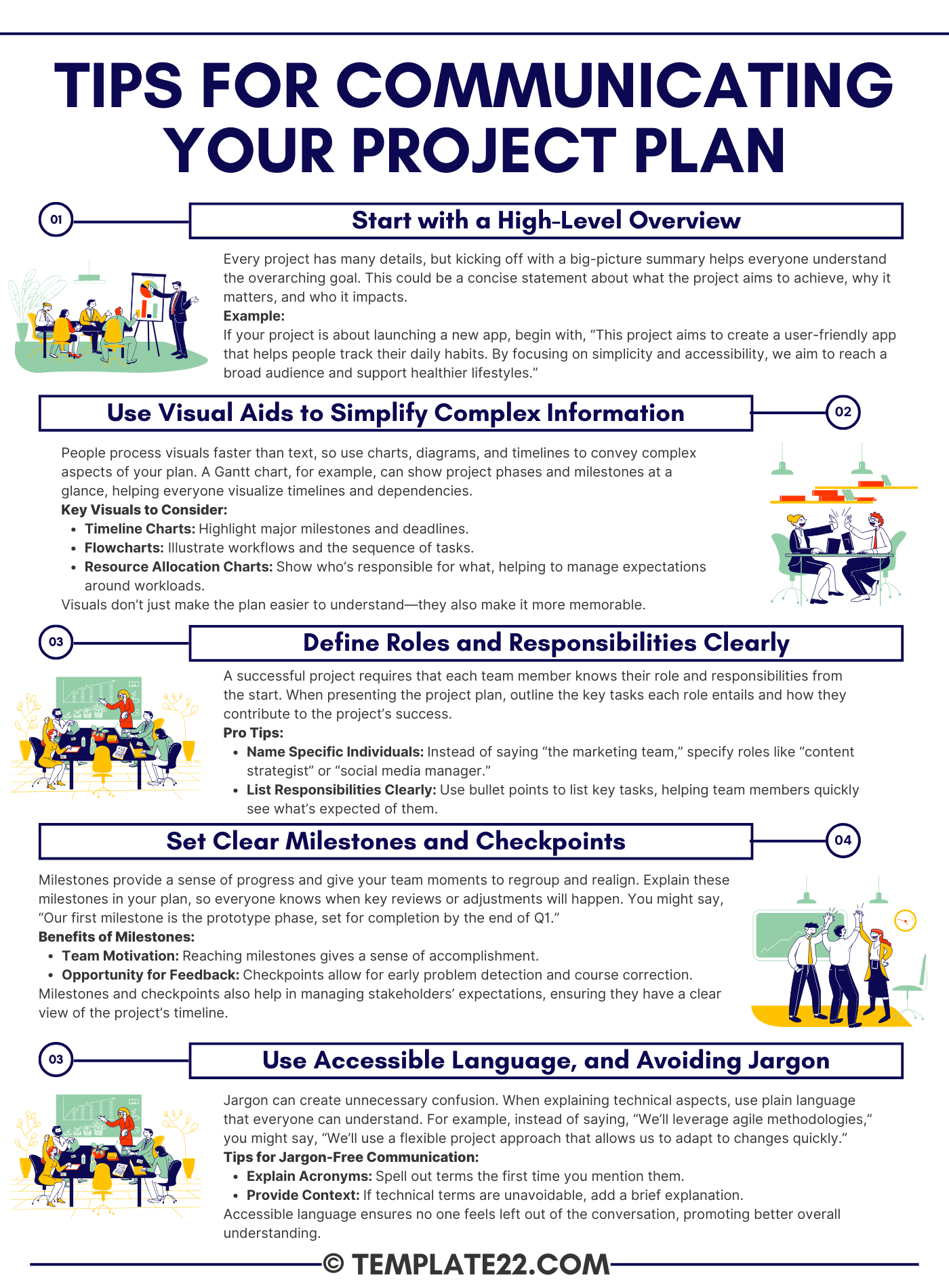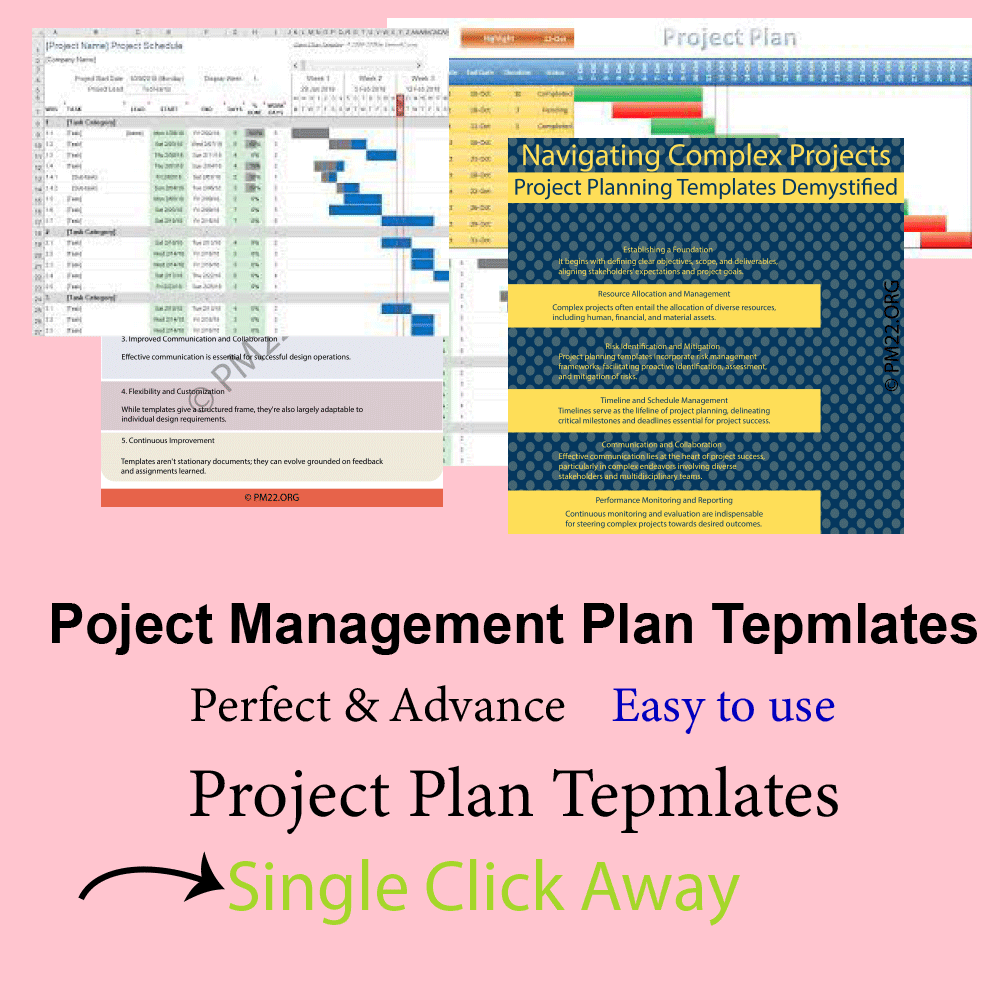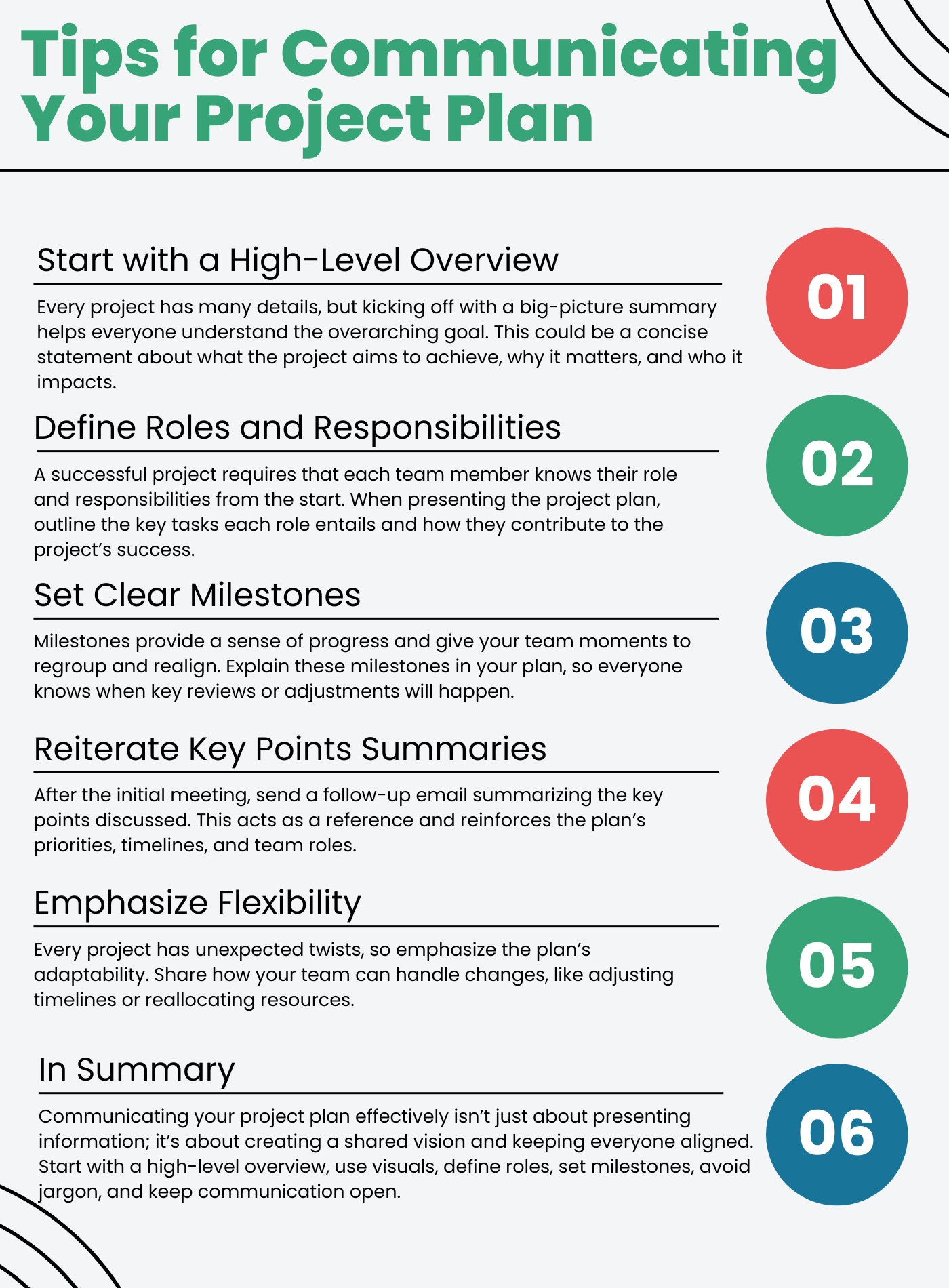 Clear communication of a project plan is crucial for any project’s success. It aligns your team, stakeholders, and anyone involved with a shared understanding of goals, timelines, and expectations. Here are some tips to ensure your project plan is communicated effectively.
Clear communication of a project plan is crucial for any project’s success. It aligns your team, stakeholders, and anyone involved with a shared understanding of goals, timelines, and expectations. Here are some tips to ensure your project plan is communicated effectively.
1. Start with a High-Level Overview
Every project has many details, but kicking off with a big-picture summary helps everyone understand the overarching goal. This could be a concise statement about what the project aims to achieve, why it matters, and who it impacts.
Example:
If your project is about launching a new app, begin with, “This project aims to create a user-friendly app that helps people track their daily habits. By focusing on simplicity and accessibility, we aim to reach a broad audience and support healthier lifestyles.”
An overview like this grounds the team in a common objective before diving into the specifics.
2. Use Visual Aids to Simplify Complex Information
People process visuals faster than text, so use charts, diagrams, and timelines to convey complex aspects of your plan. A Gantt chart, for example, can show project phases and milestones at a glance, helping everyone visualize timelines and dependencies.
Key Visuals to Consider:
- Timeline Charts: Highlight major milestones and deadlines.
- Flowcharts: Illustrate workflows and the sequence of tasks.
- Resource Allocation Charts: Show who’s responsible for what, helping to manage expectations around workloads.
Visuals don’t just make the plan easier to understand—they also make it more memorable.
CLICK HERE TO DOWNLOAD 300+ PROJECT MANAGEMENT TEMPLATES & DOCUMENTS IN EXCEL
3. Define Roles and Responsibilities Clearly
A successful project requires that each team member knows their role and responsibilities from the start. When presenting the project plan, outline the key tasks each role entails and how they contribute to the project’s success.
Pro Tips:
- Name Specific Individuals: Instead of saying “the marketing team,” specify roles like “content strategist” or “social media manager.”
- List Responsibilities Clearly: Use bullet points to list key tasks, helping team members quickly see what’s expected of them.
Clearly defined roles reduce confusion and empower people to work autonomously.
4. Set Clear Milestones and Checkpoints
Milestones provide a sense of progress and give your team moments to regroup and realign. Explain these milestones in your plan, so everyone knows when key reviews or adjustments will happen. You might say, “Our first milestone is the prototype phase, set for completion by the end of Q1.”
Benefits of Milestones:
- Team Motivation: Reaching milestones gives a sense of accomplishment.
- Opportunity for Feedback: Checkpoints allow for early problem detection and course correction.
Milestones and checkpoints also help in managing stakeholders’ expectations, ensuring they have a clear view of the project’s timeline.
5. Use Accessible Language, and Avoiding Jargon
Jargon can create unnecessary confusion. When explaining technical aspects, use plain language that everyone can understand. For example, instead of saying, “We’ll leverage agile methodologies,” you might say, “We’ll use a flexible project approach that allows us to adapt to changes quickly.”
Tips for Jargon-Free Communication:
- Explain Acronyms: Spell out terms the first time you mention them.
- Provide Context: If technical terms are unavoidable, add a brief explanation.
Accessible language ensures no one feels left out of the conversation, promoting better overall understanding.
6. Establish Open Channels for Questions and Feedback
A project plan isn’t a one-and-done document—it’s a living blueprint that benefits from continuous feedback. Encourage open communication and provide a clear channel where team members and stakeholders can ask questions or voice concerns.
Ways to Encourage Feedback:
- Set Up Regular Check-In Meetings: Use these sessions to clarify doubts and update everyone on progress.
- Use Collaboration Tools: Apps like Slack or Teams can streamline ongoing discussions.
Open communication builds trust and allows for faster resolution of issues.
7. Reiterate Key Points in Follow-Up Summaries
After the initial meeting, send a follow-up email summarizing the key points discussed. This acts as a reference and reinforces the plan’s priorities, timelines, and team roles.
Key Items to Include in Follow-Ups:
- Milestone Dates: Remind everyone of critical dates.
- Action Items: List specific tasks assigned during the discussion.
- Contact Points: Identify who to contact for further questions on each section.
Follow-ups help maintain alignment and reduce the need for repeated explanations later.
CLICK HERE TO DOWNLOAD 300+ PROJECT MANAGEMENT TEMPLATES & DOCUMENTS IN EXCEL
8. Emphasize Flexibility and Encourage Adaptability
Every project has unexpected twists, so emphasize the plan’s adaptability. Share how your team can handle changes, like adjusting timelines or reallocating resources. This reassurance is particularly valuable for stakeholders who want to see the project succeed regardless of minor roadblocks.
In Summary
Communicating your project plan effectively isn’t just about presenting information; it’s about creating a shared vision and keeping everyone aligned. Start with a high-level overview, use visuals, define roles, set milestones, avoid jargon, and keep communication open. By following these steps, you’ll create a project environment that’s transparent, adaptable, and focused—key ingredients for a successful outcome.
